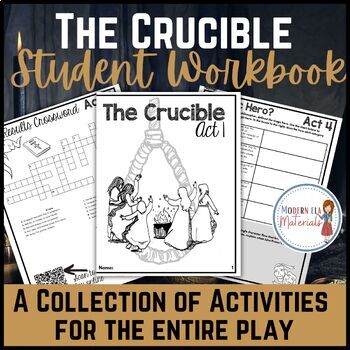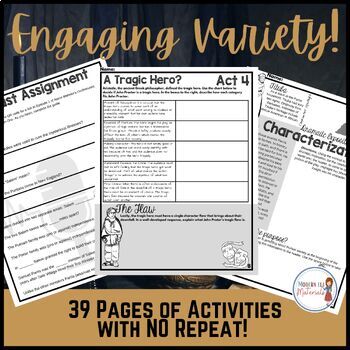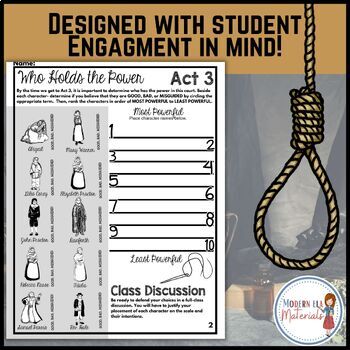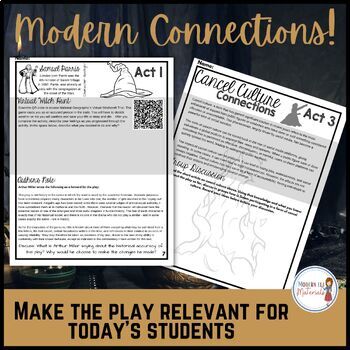The Crucible by Arthur Miller Student Activity Workbook
- Zip
Description
Keep your students wanting more while reading “The Crucible” by Arthur Miller with this collection of activities organized into an easy-to-use student workbook. Each act has a variety of activities that strengthen understanding and keep students engaged in the play. With over 39 pages of activities, this workbook has something for every student.
Best of all, these activities can be used as stand-alone activities or assembled into a student workbook. You can decide each year what works best for each group!
Built after teaching this play to students for over a decade, this workbook is exactly what you need to teach “The Crucible” to an ever-changing audience.
Here's what you'll get:
- Four Student Workbooks - One for each Act!
- Answer Keys
- Teacher Directions
Act 1 Includes:
- Character List
- Salem Town vs. Salem Village Article
- Podcast Listening Guide for Aaron Mahnke’s Episode 1 of Unobscured
- Tension in Salem Village Article
- Virtual Witchhunt Assignment
- Author's Note Discussion
- Characterization of Parris Activity
- Text Analysis Activity
- Establishing Context Activity
- History of Witchcraft Activity
- Friend or Foe Activity (Characters of Act 1)
- Summary Activity
- Character Crossword Puzzle (Digital Version Available)
Act 2 Includes:
- Purposeful Tension Activity (John and Elizabeth)
- Critical Thinking Activity
- Modernize Me- Test Translation Activity
- Recipe for Disaster Activity
- Hexagonal Thinking Activity
- A Shift in Power Writing Activity
- Character Intent Activity (John Proctor)
Act 3 Includes:
- Who Holds the Power Activity
- Spotlight on Mary Warren Activity
- Character Claim Activity
- Cancel Culture Connection Activity
- Placing Blame Chart and Activity
Act 4 Includes:
- Benefits of Confession Activity
- Change in Salem Activity
- Letter to John Proctor from John Hale Writing
- Giles Corey’s Obituary Activity
- Proctor’s Final Speech Analysis
- Tragic Hero Activity
- End Results Crossword (Digital Version Available)
BONUS: I’m including my The Crucible Hexagonal Thinking Activity for FREE with this workbook.
Your students will love the variety of this collection of activities! There will never be any boredom when using this workbook!
You will love the versatility of this resource. You can use the entire workbook or select individual activities that suit your needs.
Prep is quick and easy... Just print the workbook as a whole or select the pages you want to use. It’s that simple!





